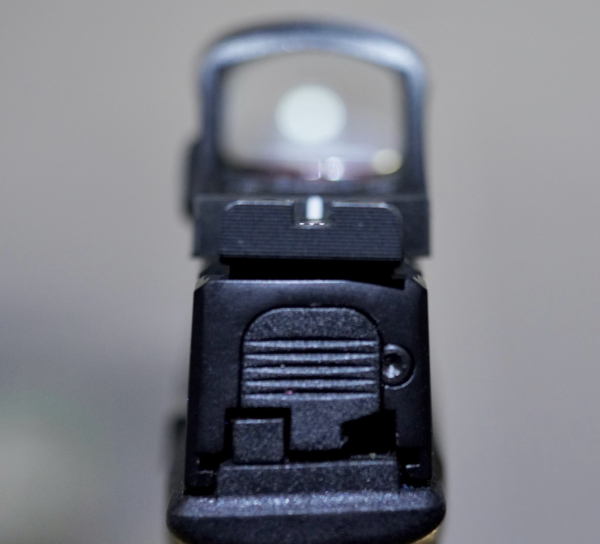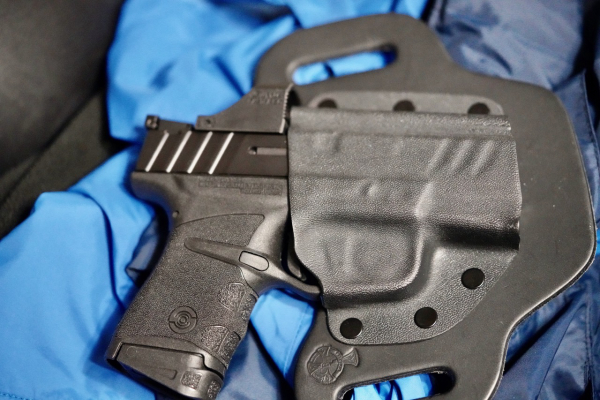Unlike many of the other semi-fossilized members of my generation, I have little reservation about using optics on my guns. I’ve always had a simple objective when firing a gun: hitting my target. As my eyes changed, my abilities changed with them. As that happened, I squintingly looked for solutions.
And, like many of my contemporaries, I’m not an early adopter.
If I were, I wouldn’t have been squinting over iron sights while other competitors were using devices that looked like flashlight tubes atop their handguns to shoot the centers out of x-rings in competition. They were big, ugly and -unfortunately, for the rest of us - made the best shooters even more accurate.
It doesn’t take too-many drubbings to overcome your prejudices. My education on red-dot optics began when they were decidedly not cool for anything other than “race guns”.
Today, it’s not unusual to see beat cops with optics on duty pistols. On the consumer side, it’s at the point that not seeing an optic on a carry gun brings questions from the folks who enjoy shooting.

In yesterday’s Wire, Burris announced the release of their new FastFire C (Compact) Red Dot Optic. It’s a flyweight (less than a half ounce) optic specifically designed for micro-compact pistols. I’ve had one for a couple of weeks, and have tried it on a couple of pistols.
I’m no stranger to FastFires. My first was mounted on a waterfowl shotgun. That one’s long gone, but other FastFires sit on a Stoeger STR-9S Combat pistol and a Ruger10/22 I used in rimfire competition. They’re different generations (the Stoeger is Gen 4, the Ruger is considerably older), but both have been reliable, durable and, importantly, not prone to consume batteries when not in use. This new Burris’ Always-On feature claims 25,000 hours of battery life on medium brightness. That’s reassuring.
That’s preferable to some of the optics in my safe. They’re so power hoggish I don’t even keep batteries in them.
Battery life is always a concern with powered optics.
Using a dead optic’s window to search or a front sight builds neither confidence- or accuracy.
It’s an even bigger challenge if the red dot won’t co-witness with standard height sights.
That’s not problem with the little “C” model. An “exceptionally low profile” allows for a co-witnessing of standard irons on “most” micro-compact pistols.
It easily co-witnessed on both Stoeger pistols. That’s really not surprising, considering they’re owned by the same parent company (Beretta Holdings). I especially appreciated the co-witness on the Stoeger Micro-C. It’s one of the few micro pistols I have with adjustable rear sights. It’s adjusted correctly for to my slightly canted hold. With the red dot solidly atop the front sight, both the iron sights and the optic are on target. The Stoeger 9C doesn’t have an adjustable rear sight, but it co-witnesses, no problem.


In case your chosen pistol’s rear sights is covered by the optic -there’s a white stripe on the back of the C that allows you to align it with the front sight. It also has the additional benefit (depending on how you present your pistol) of helping bring that red dot more quickly into your vision.
I’m not a particularly good shot with the micro-compact pistols without an optic. And I’m not planning on using any micro-pistol in competition. Not that they’re not accurate. I haven’t shot any micro-compact that’s not more capable than my abilities.
It’s just recognizing that for me they’re more difficult to manipulate and harder, again for me, to aim -accurately. They also carry lower capacities than their larger kin. Those aren’t knocks. Those are facts.
Micro-compacts aren’t designed for bullseye competitions. They’re purpose-built; designed for deep concealment and personal protection.
I’m not presenting a mico-compact pistol unless there’s an immediate and unavoidable threat.
Something too-close to either avoid or evade.
If that’s the case, they’re hard to beat. But…if you “handle your immediate problem” and discover there’s a secondary threat further away, the small size works against accuracy -along with your adrenaline dump, loss of small motor function, and narrowing of vision.
At that point, a red dot optic comes into play.
Being able to put the dot on the target at longer distances can mean you have a better chance to survive an attack by multiple attackers.
In today’s world, fewer attacks are by a single person. That’s why I believe the red dot is helpful -if not downright essential- on micro-compacts.
Better sights mean better shots. In the real world every shot matters.
We’ll keep you posted.
— Jim Shepherd